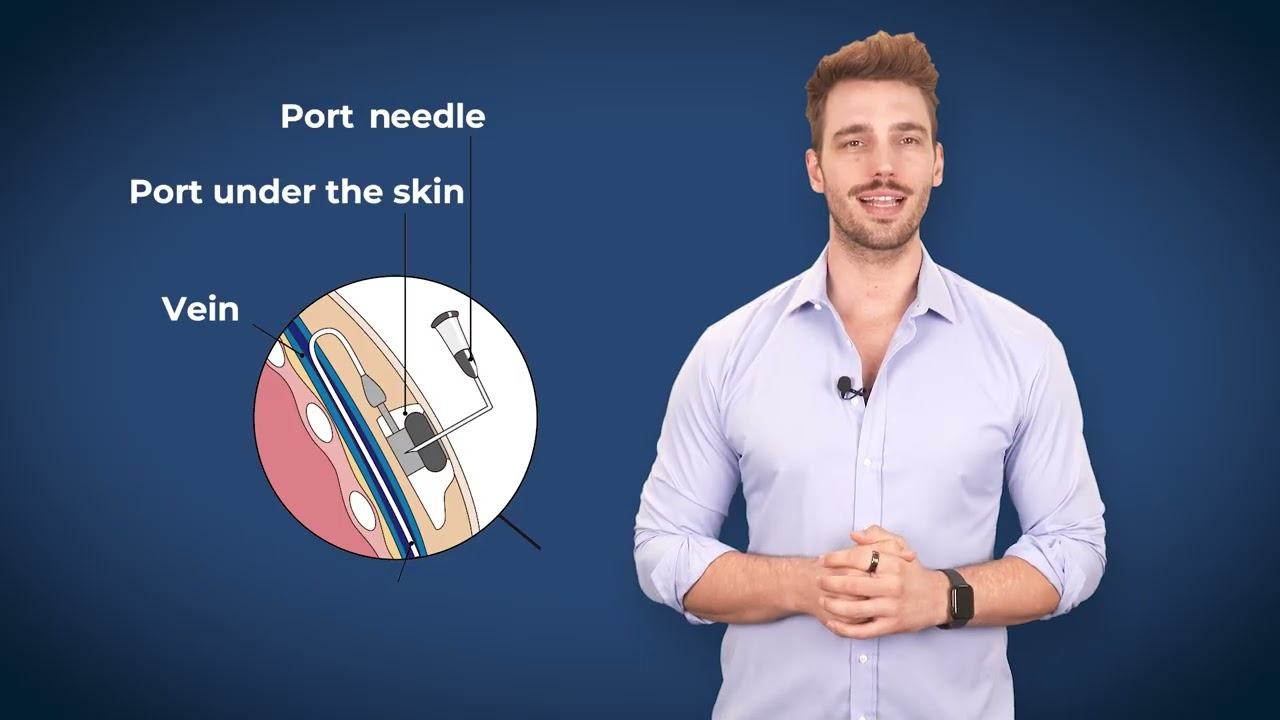Port Systems: What You Need to Know
Port systems play a vital role in long-term intravenous treatments, especially in oncology and nutritional medicine. These small, implantable devices are placed under the skin and connected to a vein using a catheter, providing a gentle and convenient way to deliver treatments directly into the bloodstream.
For patients requiring frequent or prolonged intravenous therapies – such as chemotherapy, parenteral nutrition, or blood transfusions – ports are invaluable. They reduce the strain on peripheral veins, minimize discomfort and avoid vein damage from repeated needle insertions. Reliable and convenient, port systems enhance both patient comfort and quality of life.
In this video, you’ll learn about the different types of port systems, how they work, their design, implantation procedures, and potential risks.
How Are Port Systems Designed?
Port systems consist of two main parts:
- Port body: Made from durable materials like plastic or titanium, with a silicone membrane that allows easy and repeated needle access.
- Catheter: A flexible tube that delivers medications or fluids directly into the bloodstream.
To access the port, healthcare professionals use a specialized Huber needle designed to prevent damage to the silicone membrane while ensuring gentle and efficient treatment delivery.
Who Shouldn’t Use a Port System?
While port systems are highly beneficial for many patients, they aren’t suitable for everyone. Some contraindications include:
- Active infections or a high risk of infection.
- Bleeding disorders or the use of blood-thinning medications.
- Skin or tissue damage at the potential implantation site.
- Previous or planned radiation therapy near the implant area.
- Allergies to device materials or anesthesia.
Your doctor will assess your medical history and current condition to determine if a port system is right for you.
How Are Ports Implanted?
Port implantation is typically a quick, outpatient procedure done under local anesthesia. It takes about 30–45 minutes, with common placement sites being the upper chest or arm. The location is chosen based on your anatomy and specific medical needs.
Are There Risks?
Port systems are generally regarded as safe, but like any medical device, they can have potential complications. While rare, these may include:
- Infections: Watch for redness, swelling, pain, or fever.
- Catheter issues: Such as misplacement, occlusion, or damage.
- Air embolism: A serious risk if air enters the bloodstream.
- Blood clots: These can lead to strokes or pulmonary embolism.
- Device failure: May require repair or replacement.
If you notice any unusual symptoms or issues with your port, it’s essential to contact your healthcare provider immediately.
Empowering Your Treatment Journey
Understanding how port systems work can help you feel more informed and confident in your treatment. If you’re considering or already using a port system, proper care and open communication with your healthcare team are crucial to ensuring safety and comfort.
Please note that the information within this website is not intended for self-diagnosis. It is in no way a substitute for a medical diagnosis and advice.
Image sources:
- Key Visual: pfmmedical


